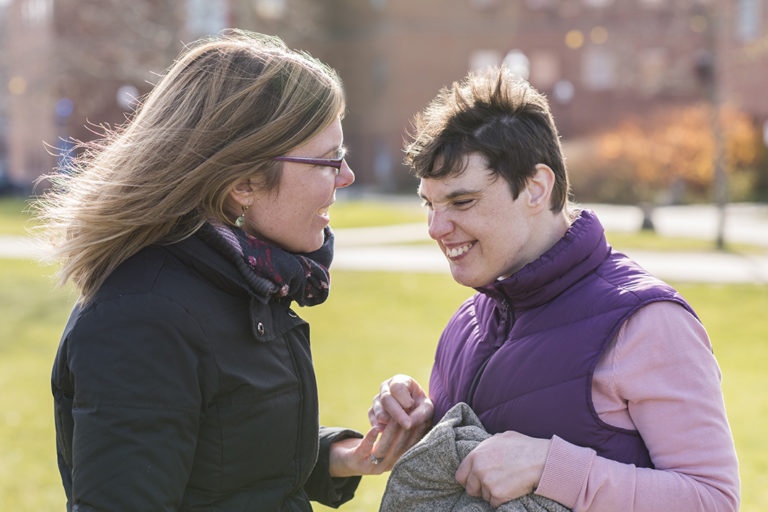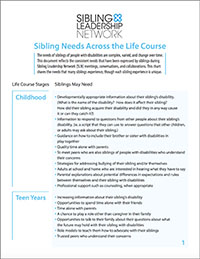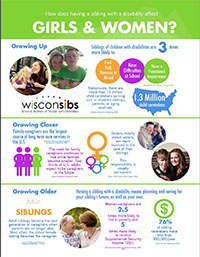SIBLING MODULE: Why are siblings of people with disabilities important?
- Sibling Module
- The Role of Siblings
- Being a Sibling Across the Life Stages
- Advocacy Role for Siblings
- Building Relationships with Service Providers
- Person-Centered Planning and Self-Directed Services
- Person-Centered Planning – Foundation Values, Principles, Best Practices and Outcomes
- Planning for the Future
- Person-Centered Life Course Planning
- Who Should Make Important Decisions? What if My Sibling is not able to Make Important Decisions?
- Supported Decision-Making: An Alternative to Guardianship
- Navigating Services for my Sibling
- Federal Support
- NY State Support
- County Support in NY
- Siblings can provide valuable peer support on navigating the systems of services and supports.
- What Siblings Would Like Parents and Service Providers to Know
- How Can I Connect With Other Siblings?
- Additional Books About the Sibling Relationship
- Quiz Your Knowledge About the Sibling Experience
- Survey
-
Sibling Module
Welcome to the Sibling Online Learning Module! This course is specifically for siblings, like you, to learn more about the research, services, and supports relevant to siblings of people with disabilities. In this course, you will be offered a variety of ways to learn including through videos, online links to resources, and rich reading material.
Download the Reflective Question Form so you can consider some important questions while you complete the online module.
Download Reflective Questions for the Sibling Module PDFAs you watch the following video, please reflect on your own sibling experience – at all ages.
Video:
The Other Child (My Brother has Autism)In the video, siblings of all ages talk about their connection to their sibling with a disability and how they care about, think about, and worry about their siblings’ future.
This video has several powerful quotes such as:
- "We share more genetically and environmentally with our siblings than with anyone else. It is as close as you can get."
- "Brothers and sisters of people with disabilities, even when they are young, are thinking about big issues."
- "Having a brother with autism has certainly changed my entire personality and my whole world."
REFLECTION
What have you learned from your sibling? What has your sibling learned from you?
-
The role of siblings
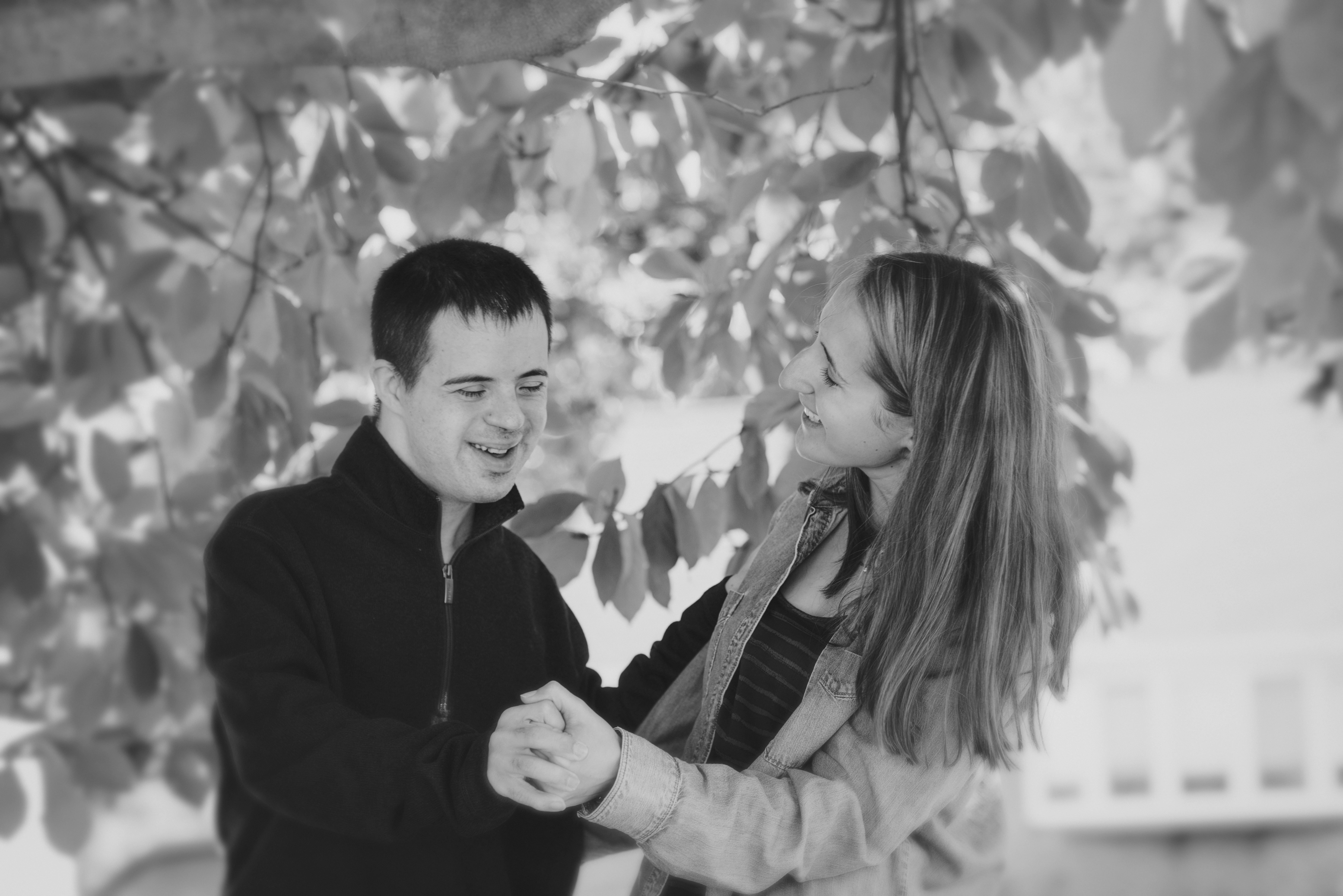
Siblings play many different roles at many different times in each other’s lives. Relationships develop and there are different experiences in infancy, childhood, adolescence, adulthood, and older age.
On different days and in different stages, siblings can be friends, teachers, rivals, cheerleaders, roommates, competitors, and caregivers. Most siblings of people with disabilities will tell you that their sibling experience has shaped their world view and impacted their lives significantly. The sibling experience is characterized by both rewards and challenges.
-
Being a sibling across the life stages
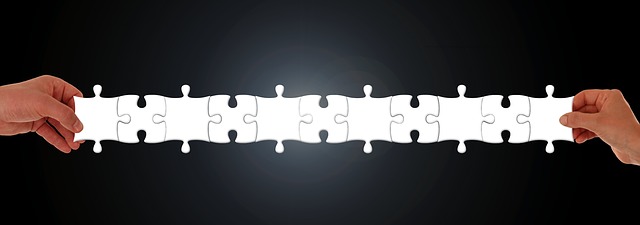
Siblings of people with disabilities have different needs across the lifespan. As siblings grow and develop, their relationship and roles with their brother or sister does as well. At all ages, siblings need information, peer support, and an opportunity to discuss the future.
Please read Sibling Needs Across the Life Course that outlines the various needs that siblings of people with disabilities may have across developmental stages.
REFLECTION
Which of these sibling needs do can you most relate to in your life currently? Are there any sibling needs that you think this list has left out?
Please read How does having a Sibling with a Disability Affect Women and Girls? by Wisconsibs to learn more about being a caregiving sister at all stages of life.
REFLECTION
This document mentions that sisters, mostly oldest sisters, are more involved in the care of their siblings. Why do you think this is the case?
-
Advocacy Role for Siblings
Siblings can play an important advocacy role at three different levels:
- Individual
- Community
- Legislative
The gears below illustrate the different levels of advocacy and how they are interconnected. People can be advocates at different levels related to different situations. All levels are important to promote change.

Pre-reading questions to consider:
- How have I advocated or spoken up for and/or with my sibling in the past?
- Do I currently consider myself an advocate? If so, in what ways?
- Do I want to be an advocate? If so, in what ways do I want to advocate?
- Does my sibling want me to help advocate with him/her?
Individual Advocacy
Individual advocacy is speaking up to make changes that will impact your own life or the life of your family. Siblings often play a role in supporting their siblings.
In the Sibling Survival Guide, chapter authors Angela Martin and Barb Sapharas encourage "siblings to be ‘content experts’ who can assist and support our siblings. They suggest ways that we can support and advocate with our siblings as we contribute person-centered information about:
- Personal outcomes – what our sibs want out of life – and what they’d like to change
- What others like and admire about our sibs: we can be ambassadors for our sibs, reminding providers and others about the qualities and attributes in our sib that we admire, such as their compassion, honesty, persistence, sense of humor, or artistic perspective.
- What is important to our sibling: ritual, routines, people, activities, things, traditions, culture, spiritual activities, etc. Their quality of life will increase when what is important to them is present in their lives.
- How to provide support: Support means different things to different people. As siblings, we know better than most how everyone can effectively support our brothers and sisters who have disabilities." (Martin & Sapharas, 2014, p. 142)
Please watch this video from Amira Rasheed about the support that her siblings have provided in her life. She describes how her brother played a unique role to support her. http://siblingleadership.org/about/sln-videos/
REFLECTION:
How have Amira’s siblings supported her?Community Advocacy
Community Advocacy is when people bring their individual voice collectively with a group to create change or provide collaboration. There is power in numbers and when siblings join with others they can effect even more change together beyond their individual family and have a positive impact on a larger group. Here are a few ways to get involved in community advocacy with a group:
- State sibling support groups such as SibsNY or disability-advocacy groups such as NYSARC can be helpful groups for siblings.
- Siblings can help their brothers and sisters with disabilities by connecting them to self-advocacy groups such as Self Advocates Becoming Empowered (SABE).
- Additionally, siblings can play a role in community advocacy by serving as volunteers or board members for agencies, schools, and organizations that provide services to their siblings.
- Siblings can often play an important advocacy role by encouraging and educating the organizations and schools that serve their siblings to create a culture that supports whole family planning and sibling input.
- You could participate in a rally or protest related to an issue.
Legislative Advocacy
Legislative Advocacy is educating policymakers who have decision-making authority to effect larger change by enacting or changing legislation. This change can have an impact on an even greater number of people at the systems level.
There are many ways to advocate and it can look different depending on your personal preference and the particular situation. For example, you could meet with key decision-makers and educate them about your issue. You could write a letter to the editor of a newspaper sharing your opinion. You could call or visit a legislator’s office to share your story and ask for change regarding a policy. There is not just one way to advocate and often multiple methods done by many people is the best way to get attention around your issue to effect change.
Sibling Talking Points sheet This sheet highlights facts about siblings that people may not think about very often. This can be used not only in advocacy but when conversing with the media about siblings. You can use this resource as a guide for you to talk about or write about the sibling experience with legislators or the media. Instead of giving this sheet to people, these talking points can serve as your "notes" to help you talk about the issue and bring up key points. You can adapt and expound on these talking points. It can be especially useful for you to share personal examples or stories along with these talking points.
SLN Advocacy Letter-writing tips This sheet provides tips to effectively reach out to legislators and write a letter sharing your story and asking specifically for them to help change something that is important to you and your family. Legislators especially appreciate letters from people who are their constituents and live in the state or district that they are elected to govern.
REFLECTION
In which level (individual, community, or legislative) do you advocate most often? Which level is the most challenging level for you to do advocacy?
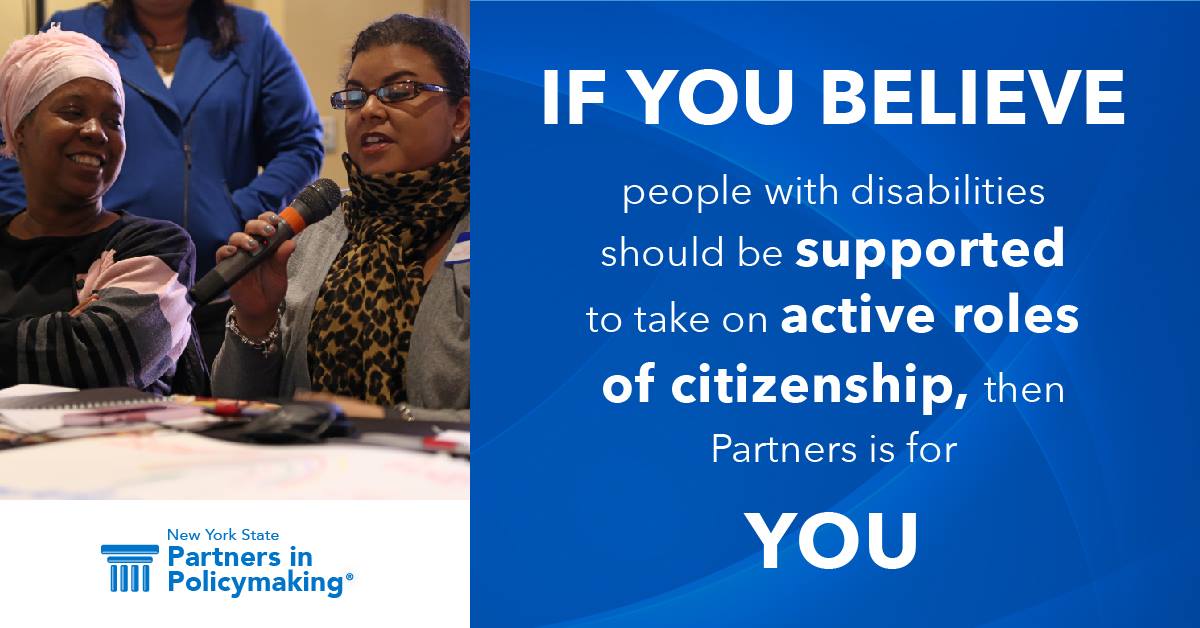
NYS Partners in Policymaking® is an innovative leadership training opportunity for self-advocates and parents/family members of individuals with developmental disabilities. Join today at http://www.nyspip.org
Martin, A., & Sapharas, B. (2014). Advocacy: Making your voice heard. In D. Meyer & E. Holl (Eds.) Sibling Survival Guide. Bethesda, Maryland: Woodbine House. -
Building relationships with service providers
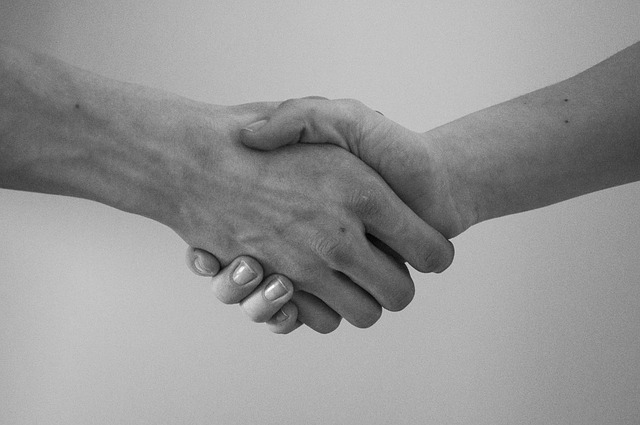
Getting to know about your sibling’s service providers is an important way for you to support your brother or sister. For the purpose of this Online Learning Module, service providers are considered to be the paid professionals who deliver services and supports to people with disabilities. These service providers may be found in different organizations and agencies including those that provide housing, transportation, employment, recreation, health care, and therapeutic services.
Even if your parents are the primary contact and communicator at this time, you can start to get familiar with your sibling’s service providers and build a relationship over time. Check with your sibling first to make sure he or she is comfortable with you contacting the service providers. In the future you may be interacting with your sibling’s service providers more often and you may need to speak up and advocate for your sibling at certain points.
There are a number of ways you could you get involved in your sibling’s life and build the relationship with service providers. Be sure to talk with your sibling first to see what ways he or she feel comfortable with you getting involved. Here are a few ideas:
- You may need to help your sibling navigate different decisions related to his or her service provider. There may be changes in staff at the service provider that you can support your sibling to get to know and share what his or her preferences are related to the services he or she receives.
- IEP (Individualized Education Program) Planning and Review – An IEP is a written statement for each public school child with a disability that is developed, reviewed, and revised in team meetings. For students age 16 and older, the IEP must attend to long-term adult outcomes related to aspects of living, learning, earning and community involvement as part of the education program. ISP (Individualized Service Plan) Planning and Review – an ISP is the written document that identifies what areas in a person’s life services and supports will address and how they will be addressed. It may be beneficial to both the individual with the disability and the sibling(s) to attend some IEP/ISP meetings. Siblings may gain a greater understanding of their sibling’s educational or adult service program, make connections with the staff, and contribute valuable information and insight that could assist the team and their sibling.
- Volunteer or serve on one of your sibling’s organization’s boards, committees, or panels. Contact one of the agencies or organizations that provide services for your sibling and let them know that you would like to be more involved. They will probably welcome your offer.
- Start a sibling group at your sibling’s organization and connect with other siblings of people who use that service provider – this is a great way to get peer support from other siblings and insights from their experiences with the service provider. Your group could identify ways you could help the provider improve their work and potentially advocate together around certain issues. Make sure you connect your sibling group with the larger sibsNY sibling support chapter in your state so you don’t have to reinvent the wheel and so you can coordinate efforts to support siblings in your state.
- Person-Centered Planning – Person-centered planning is an approach to planning that is designed to put the person and when appropriate, his or her family in the driver’s seat for determining what services and supports the person wants and needs in the context of the life that they want to live. There are many different approaches and tools to person-centered planning. One of the best reasons to use a person-centered approach is to enable people with disabilities to increase their self-determination about their life. Family members can be critically important contributors to this process, and as a sibling, you have a unique relationship with and perspective about your brother or sister’s life, in the present moment and in the future. You can play an important role in advocating with or on behalf of your sibling to ensure that they are provided opportunities to grow and learn new things throughout the course of their life. Often, parents will advocate for the "sure and safe" path, whereas siblings may recognize that there is much more possible in life.
-
Person-Centered Planning and Self-Directed Services
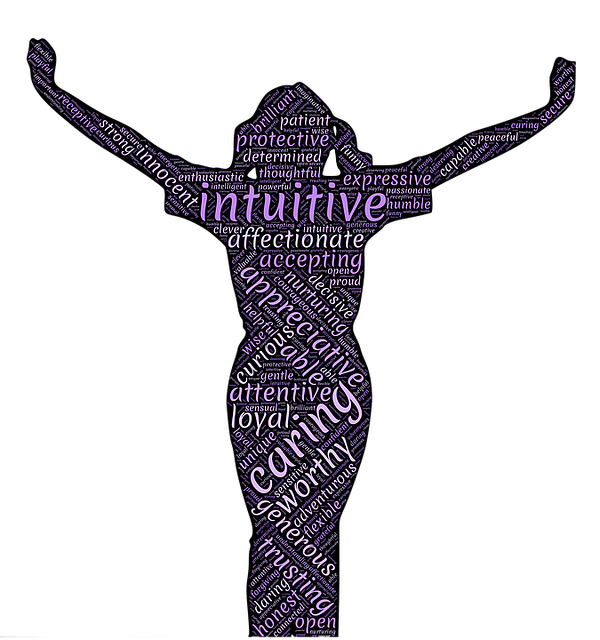
Person-centered planning has been around for decades. When resourced and used as it was intended by its authors, person-centered planning can lead to supporting people with disabilities to have a life that is self-determined and directed. Think about how you feel when someone in authority tells you to do something that you don’t want to do! Being in charge of your own life generally produces better results and less conflict.
Disability service provider organizations that rely on federal funding through the Centers for Medicare and Medicaid Services (CMS) are required to prove they are providing person-centered services or they risk losing that money. The problem is that there is no standardized way to do person-centered work so agencies are left to decide for themselves what person-centered planning means and how they will design and implement person-centered services. This can be very confusing to everyone, but especially to the person with a disability and their family supporters!
There are many person-centered planning processes to choose from. Service providers that offer an array of person-centered planning processes can be a vital resource to families. PATH, MAPS and Personal Futures Planning methods, among others, are all excellent planning methods that can assist the individual with a disability, their siblings and other family members and friends design a vision for the future and identify the steps that are needed to move toward it. (To learn more about these planning methods, visit www.inclusion.com ).
Good person-centered processes are designed to assist the person and their support team explore and address particular questions, issues or ideas so that the individual with a disability can make their own decisions about what to do or what they want. There are common threads – core values and beliefs- that run through any and all processes that are truly person-centered. If these elements are not evident in planning with your brother or sister, the planning is NOT person-centered!
-
Person-centered planning is a means for uncovering what is already there: the essence and extraordinary gifts, strengths and capacities of a person
…it is about sharing life with one another
…it is about sharing power and giving up control over another person, especially persons with significant disability - Person-centered planning assumes that the person and those who love the person are the primary authorities on the person’s life direction, as such the person is the driver of the process
- Person-centered planning is the beginning of the journey of on-going learning through the shared action that results from participation in planning and working together
- Person-centered planning intends to shatter myths about people who have been given disability labels and to foster inclusive communities
- Person-centered planning relies on skilled facilitation in developing and moving the plan forward
- Person-centered planning requires systems to respond in flexible and meaningful ways relative to the unique interests and needs of the focus person.
Good Person-Centered Planning Invites Whole Family Involvement
One of the key features of person-centered planning is the inclusion of family, friends and others outside of the service program. Certainly staff are included as well, but they are not the authority or the drivers in the planning process. This can seem weird for those who are used to traditional approaches through which professional authority defines the direction for parts or all of a person’s life.
Person-centered planning presumes that the person and their family know what is best for the person and for the person’s future. Identifying hopes, dreams, concerns and even fears about what lies ahead is driven by the person-centered process. In their Planning for the Future chapter (Meyer & Holl,2014),
the authors tell us that by "naming the nightmare," families are able to recognize the kind of support and concrete actions that will need to be put in place in order to avoid realizing that worst case scenario. Service providers can be instrumental in assisting the family in accessing resources and implementing plans that address direct concerns and support high quality of life with and on behalf of the person.
Bringing together family and friends – folks outside of the service world – creates a richness and depth and dynamic for planning and engaging in the person’s future that (unless the person themselves reject this level of family involvement), simply can’t happen any other way.
Here is a short video of Beth Mount, one of the pioneers of person-centered planning, giving a great description of what is at the heart of good planning. In this segment, you will be provided some resources in person-centered planning if you want to learn more about it.
-
Person-centered planning is a means for uncovering what is already there: the essence and extraordinary gifts, strengths and capacities of a person
-
Person-Centered Planning – Foundation Values, Principles, Best Practices and Outcomes
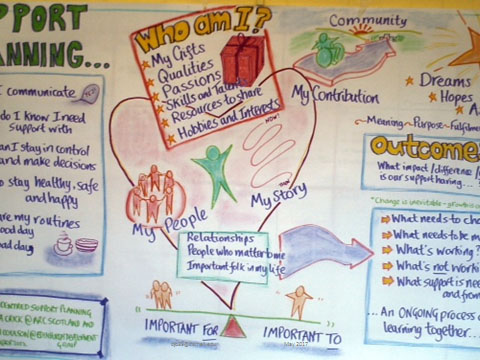
When person-centered planning emerged on the disability scene in the 1980’s, its purpose was clear: to change the social status of people with disabilities (from "client" or "consumer" to contributing member of everyday society) and to change social perception about disability (from a negative sense of ‘otherness’ or ‘us’ and ‘them,’ to an expanded appreciation, awareness and understanding sense of ‘we’). The outcomes of this work should result in deep and meaningful change in the life of a person with a disability: away from life primarily defined and experienced through disability service to a life most people would be glad to have, with the kind of support in place that makes it happen.
Person-centered planning is based on three value-based principles:
- All people are born with gifts, potential, capacity and a purpose in life
- All people have a right to equal access to opportunity and experience through which to explore, discover and express these gifts, capacities, potential and purpose in life
- All people have a responsibility to contribute these gifts, potential, capacity, and purpose in life to society in positive, meaningful and/or productive ways
Today, "person-centered planning" has become a familiar term in the service delivery system designed for people with disabilities. In many ways the term has taken on a life of its own: people attend training in order to become "person-centered," organizations become certified as "person-centered" in the delivery of services. In the U.S., provider organization s who receive federal funds from the Centers for Medicare and Medicaid Services (CMS) are required to prove that services are "person-centered."
Unfortunately, widespread use and expanded definition of what it means to be person-centered has watered down how person-centered practice is used with and on behalf of individuals with disabilities. Many agencies are concerned about complying with the regulations that have been issued by CMS under the Home and Community-Based Services program requiring person-centered planning and community integrated services. The outcomes that result from regulatory compliance often take on a different flavor than the outcomes that were envisioned when person-centered planning was created. Siblings can play an important role, in recognizing if/when this is happening and advocate for high quality and genuine person-centered planning methods and implementation.
-
Planning for the Future

Siblings often have questions and concerns that they have been considering over their lifetime. These questions typically revolve around wondering what will happen to their own life and the lives of their siblings when their parents are no longer present. There are no right or universal answers to questions like "will my sibling live with me?" and "will I be my sibling's primary caregiver?" Siblings should have ongoing conversations with their brother or sister, their parents, as well as other siblings and family members, to talk about future planning. It is very important that the person with the disability be consulted about what role she or he wants their siblings to play. Also, if there are a number of siblings in the family, everyone should discuss which roles make sense for which people in the family. This may change and evolve over time as life circumstances change. This should be an ongoing conversation that families have throughout life.
Starting the conversation is often the hardest part. There is much inertia due to the discomfort that can come with talking about the future, especially because it includes facing the mortality of parents and sometimes even ourselves as siblings.
How do I talk to my parents about the need to plan for a future that will not include them someday?
Download "Tips for Siblings: Getting the future planning conversation started" PDFTo learn more about Future Planning, please watch and listen to this SiblingResources Sibling Webinar: Future Planning, presented by Katie Arnold, Executive Director, Sibling Leadership Network. http://siblingresources.org/archives/#future-planning
-
Person-Centered Life Course Planning
One of the best ways to use person-centered planning is to start early in a person’s life and update the plan in the context of a positive future across life domains with/for your sibling at major life transition stages. Life domains are things like quality of daily living and life, school, employment, community involvement and contribution, health and safety, living arrangements and aging/retirement. Major life transitions for people living with significant disabilities occur across the life span.
The life transition timeline starts at birth or when disability-related intervention begins. It is a linear process. As people enter the school system, IEP planning begins. At age 15 or 16 (depending on the state’s regulations), transition planning must begin. At age 18 the question of guardianship crops up. At age 21, if they are still in school, the student ages out of the school system and transitions to adult service programs, which may include such things as service-based housing, employment and recreation. Other transition points occur as your parents/caregiver ages and the questions about estate planning and support for your sibling in later years start to surface.
It is easy to see that good planning, early and often, can help families and people with disabilities to be proactive and avoid falling off the cliff at major transitions stages throughout life! Regardless of where you and your sibling are in the life transition phase, it is never too early or never too late to begin thinking, talking, planning and taking action. There are some useful models and tools available to help families get started and keep moving into the future.
The University of Missouri-Kansas City (UMKC) Institute for Human Development has developed a comprehensive set of LifeCourse Planning resources and tools that are easy to use and are invaluable to thinking and talking about current and future life issues, (www.lifecoursetools.com ). The LifeCourse framework is built on the fundamental belief that "all people have the right to live, love, work, play and pursue their life aspirations just as others do in their community."
Charting the LifeCourse is a framework to help individuals and families of all abilities and at any age or stage of life develop a vision for a good life, think about what they need to know and do, identify how to find or develop supports, and discover what it takes to live the lives they want to live. Although originally developed with individuals with disabilities and families in mind, the LifeCourse tools are applicable to anyone who wants to imagine, design and experience life on their own terms.
To give you an idea of the type of planning that LifeCourse can help with, take a look at the following downloadable document: Tools for Developing a Vision – Family and/or Tools for Developing a Vision – Individual
The LifeCourseTools.com website is owned and operated by the UMKC Institute for Human Development, University Center for Excellence in Developmental Disabilities, located at 215 W Pershing Rd., 5th Floor, Kansas City, MO 64108.
Unless specifically noted otherwise, Charting the LifeCourse materials and resources available at LifeCourseTools.com are licensed under a Creative Commons Attribution-NonCommercial-ShareAlike 4.0 International License.
-
Who Should Make Important Decisions? What if My Sibling is not able to Make Important Decisions?

Adults are faced with having to make decisions every day. Some decisions are easier to make than others. The decision-making process is a series of steps that many of us may take for granted because we are used to making so many decisions all of the time. Did you know there are seven steps involved in the decision-making process?
- Identify the decision
- Gather information that is important to the decision at hand
- Identify options that are connected to resolving the decision
- Assess the pro’s and con’s of each option
- Make a choice about which option seems to be the best one, given the information and evidence that has been gathered
- Make the decision/take action
- Assess the outcome – what was tried and learned as a result? Is there anything else that needs or should be tried?
We navigate these steps all of the time without necessarily paying much attention to them. That is especially true when we make low impact decisions. But what about the big decisions? Odds are, you become more aware of the process and become intentional about each step.
REFLECTION
How many decisions does your brother or sister makes about the everyday choices in his or her life? What about big decisions, like the kind associated with health, where to live, with whom to live, where to go for fun and how they are able to get there? Do they have someone to help them go through the decision-making process or are decisions made for them by someone else?For people living with significant intellectual and/or developmental disabilities, being able to practice decision-making and have these decisions direct the kind of services and supports is an essential part of self-determination and self-direction. But how can individuals with significant disabilities exercise their right to autonomy if their cognitive and/or communication ability is severely limited?
Until rather recently, people with significant intellectual and developmental disabilities were deemed unable to make their own decisions so someone (a family member or a surrogate) was appointed to be their "guardian." Guardianship is a legal tool that allows one person to make decision for another person. Sometimes the guardian is chosen by the person or the family. Other times, the guardian may be selected and appointed by the court system, especially in the event that the person does not have family or family representatives to take on the role.
A guardian is considered a "substitute decision-maker" for the individual and are designated to assist with personal and health related decision-making. More often than not, guardianship also includes conservatorship, which allows the guardian to also make financial decisions on behalf of the person who has been determined incapable of making decisions on their own. Generally speaking, families are encouraged to pursue guardianship when the individual with a disability nears the age of adulthood, (i.e. 21).
Making decisions for someone else is a big responsibility. Even those who believe that they are doing so with the person’s best interest in mind may be in a hard position to be able to explain how they know that the decision is something that the person themselves really want, versus what others really want for them…even with the best of intention.
The United Nations Convention on the Rights of People with Disabilities (CRPD Article 12) stresses the right of individuals with disability to legal capacity on an equal basis with others. That is to say that people with intellectual and/or developmental disabilities must be able to practice decision-making by making their own decisions (big and small) and communicate these decisions to others. ( https://www.un.org/development/desa/disabilities/convention-on-the-rights-of-persons-with-disabilities/convention-on-the-rights-of-persons-with-disabilities-2.html )
Yet the context of guardianship, the right to make one’s own decisions is essentially denied to people with intellectual disabilities.
-
Supported Decision-Making: An Alternative to Guardianship
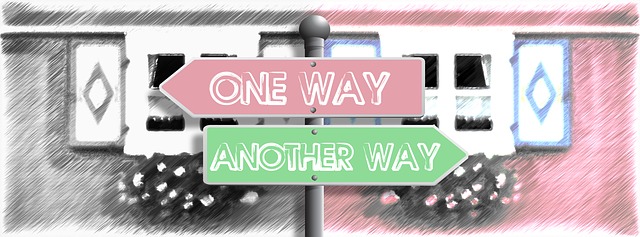
Guardianship, at its core, transfers the legal capacity for making decisions from one person to another. This is important because the person loses the right to not only make decisions and steer the course of their life, but they are no longer recognized as a person whose decisions are entitled to legal recognition. In a very profound way, the individual loses their person-hood.
Supported decision-making (SDM) is an alternative to guardianship that allows an individual with a disability to work with a self-selected team who assist them in making their own choices about his or her own life. Under this model, the individual designates people to be part of a support network to help with all aspects of decision-making; big decisions as well as day to day lifestyle decisions.
Supported-Decision Making (SDM) is a viable alternative to guardianship. SDM promotes self-determination, control and autonomy. Unlike substituted decision-making where guardians or family members or caregivers make decisions for the individual, supported decision-making enables the person to make his or her own decisions with assistance from a trusted network of supporters.
Let’s face it. Very few people makes decisions – especially the big ones- all by themselves. We all use supports of some kind when faced with important and sometime complex decisions. Your brother or sister with an intellectual and/or developmental disability also need support to make decisions. The only difference is what kind of support or how often the support will be needed in the decision-making process.
SDM works this way:
Supported Decision-Making is a process of supporting and accommodating an adult with an intellectual/developmental and/or cognitive disability in any/all ways that enable the individual to make life decisions, including decisions related to where they want to live, with whom they want to live, the services, supports, and medical care they want to receive, where they want to work and how they want to participate in and contribute to community life.
The individual chooses a team of trusted supporters to help them throughout the 7 step decision-making process described earlier: get information, consider options, understand the pros and cons of each option, etc. One person in the team may take on a key supporter role, if that makes sense and the individual agrees. Lots of times, this is a sibling or another relative, although it is not required.
SDM agreement protocols vary from state to state. There is a resource below pointing you to the National SDM site which includes a map of the United States. Clicking on any state will bring you to information concerning the requirements for supported decision-making processes in that state. It is important to understand what your state requires in order to make the agreement binding. Typically, the person and the supporter fill out and sign a legally valid supported decision-making agreement form and have it witnessed or notarized, as required by law. The agreement does not require attorneys or court filing. It does not allow a supporter to make decisions for the person or act in their place. Both parties keep a copy of the agreement and present it when needed. If they decide to use an attorney, the attorney can keep a copy, too.
The agreement can be created at any time. It can also be ended at any time (A) by the person or their supporter, (B) on a date determined at the beginning of the agreement, or (C) by the State’s Department of Family and Protective Services if they find the supporter is abusing, neglecting or exploiting the person being supported.
Remember, while guardianship serves to transfer the rights of an individual with an intellectual disability to make his or her own decisions, supported decision-making protects the right for people to make their own decisions and preserves the dignity to learn from mistakes and be protected against exploitation. Key areas for SDM include health, work, money management, community participation, health care advanced directives and even end of life wishes.
To learn more here are some resources about Supported Decision-Making.
- National Resource Center for Supported Decision-Making http://www.supporteddecisionmaking.org/
- Supported Decision-Making & the Problems of Guardianship https://www.aclu.org/issues/disability-rights/integration-and-autonomy-people-disabilities/supported-decision-making
- Supported Decision-Making American Bar Association Commission on Disability Rights https://www.americanbar.org/groups/disabilityrights/resources/article12.html
- Supported Decision-Making New York http://sdmny.org/
-
Navigating Services for my Sibling
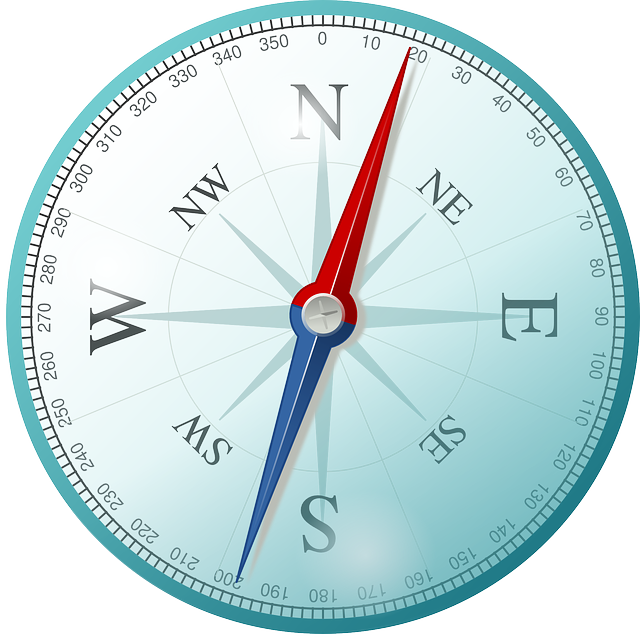
The service system for people with disabilities can be complex and difficult to understand. Siblings often begin to help their brother or sister in system navigation during times of family transition and they frequently find that the details can be challenging and overwhelming.
Please learn more about system navigation at the Federal, NY State, and County levels by listening to the following portions of a SiblingResources webinar for siblings, entitled Navigating the System . The webinar in its entirety can be found here: http://siblingresources.org/archives
-
Federal Support

Please click here to listen to Jennifer Frank, Home Service Director at Franziska Racker Center and sibling, share information about Federal Support.
In this section, you will learn about Federal Support:
Social Security Administration (SSA)
- Supplemental Security Income (SSI)- monthly financial stipend
- Social Security Disability Insurance (SSDI)- monthly financial stipend
Centers for Medicare and Medicaid (CMS)
- Medicaid- insurance for low income and/or disabled individuals
- Medicare- insurance for people over 65 or younger disabled individuals
Housing and Urban Development (HUD)
- Housing Choice (Section 8) Vouchers- pays up to 70% of rent for qualifying individuals.
- Housing grants- local businesses use it to create housing developments for low-income residents
-
NY State Support
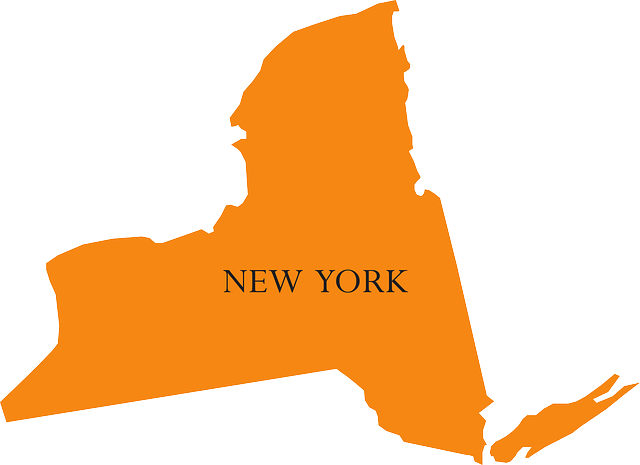
Please click here to listen to Jennifer Frank, Home Service Director at Franziska Racker Center and sibling, share information about NY State Support.
In this section, you will learn about NY State Support:
Office for People with Developmental Disabilities (OPWDD)
- Supports for individuals with developmental disabilities: Medicaid Service Coordination, Respite, ISS grants, Behavior Support, Housing, Community Habilitation, Home Modifications
NYS Office of Mental Health (OMH)
- Supports for individuals with a mental health diagnosis: Case management, Therapy, Psychiatry, Medication management, Housing
Adult Career and Continuing Education Services-Vocational Rehabilitation (ACCES-VR)
- Employment/Educational Support for individuals with disabilities: Job coaching, Vehicle and worksite modifications, Vocational counseling, College/vocational tuition
-
County Support in NY
Please click here to listen to Jennifer Frank, Home Service Director at the Racker Center and sibling, share information about County Support in NY.
In this section, you will learn about County Support:
Department of Social Services
- Medicaid, Supplemental Nutrition Assistance Program (SNAP), Home Energy Assistance Program (HEAP), Adult Protective Services (APS), Long Term Care (respite, home health care)
Public Housing Agencies (PHA)
- The local contact for applying for Housing Choice (Section 8) Vouchers or low-income housing. Waiting lists can average 3-6 years. The list may be frozen for a period of time if funding is limited.
-
Siblings can provide valuable peer support on navigating the systems of services and supports.
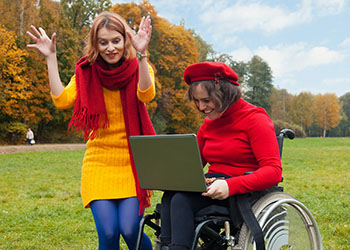
Please click here to listen to Amy Halm, Sibling Leadership Network’s Program Manager who is a sibling, discuss tips from siblings about system navigation.
These sibling tips for system navigation include:
- Have a conversation with your sibling and your family about the roles each person will play in navigating the system
- Get to know your sibling as an adult person and not just the kid you grew up with.
- Connect with your family about future planning.
- Keep good records and notes.
- Make and maintain connections.
- Be aware of your own needs.
- Consider the process to be ongoing.
- Find sibling support for yourself!
Important sibling resource for navigating the system in New York!
If you are searching for more information about system navigation, please visit New York State Multiple Systems Navigator http://www.msnavigator.org/
This website will allow you to access helpful health, education, human service and disability information on one user-friendly website.
-
What Siblings Would Like Parents and Service Providers to Know

The perspective of siblings is unique. Don Meyer of the Sibling Support Project created a document to educate parents and services providers about what siblings want them to know. Take a look at this document
What Siblings Would Like Parents and Service Providers to know (PDF from the Sibling Support Project, author Don Meyer) Download "What Siblings Would Like Parents and Service Providers to Know"
REFLECTION
Which of the ideas from this article seemed the most relevant to your sibling experience?
-
How can I connect with other siblings?
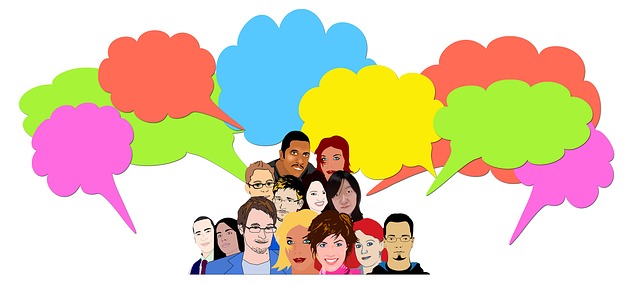
Meeting other siblings of people with disabilities can be powerful. Often siblings do not even understand why it is helpful to connect with other siblings until they experience it for themselves. There is something indescribable about meeting other people who really "get it" in a way that is difficult for parents or friends to deeply understand.
Meeting other siblings can help people realize they are not alone. Siblings can also get information from each other about things they did not even realize they needed to know. Peer support provided from other siblings can help people navigate family dynamics and learn insights for their current and future role with their brothers and sisters with disabilities.
Here are some sites and resources that offer free registrations and will keep you updated and connected on important issues.
SIBLINGRESOURCES
http://siblingresources.org/SiblingResources is an exciting collaboration between Yang-Tan Institute of Cornell University, The Sibling Leadership Network, and SibsNY. Through a grant from NYSDDPC, we are building the community for adult siblings of individuals with disabilities in NY. Please visit this website to learn more and register to stay connected to important information.
SIBLING LEADERSHIP NETWORK
http://www.siblingleadership.org/The Sibling Leadership Network (SLN) is a national nonprofit organization that provides siblings of individuals with disabilities the information, support, and tools to advocate with their brothers and sisters and to promote the issues important to them and their entire families.
SIBSNY
http://www.sibsny.org/SibsNY is a volunteer organization dedicated to providing the siblings of individuals with intellectual, developmental and learning disabilities with information and support. SibsNY is the NY state chapter of the national SLN.
SIBLING SUPPORT PROJECT
http://www.siblingsupport.org/The Sibling Support Project is a national effort dedicated to the life-long concerns of brothers and sisters of people who have special health, developmental, or mental health concerns.
Connect with Siblings Online
There are a number of online, interactive closed communities for siblings at different ages to connect with each other for information and peers support. Hosed by the Sibling Support Project, these groups serve as front-line resources for sibs, by sibs. Siblings can look on Facebook to request to be added to a group.
SibTeen —for sibs who are teenagers https://www.facebook.com/groups/SibTeen /
Sib20 —for siblings in their 20s https://www.facebook.com/groups/Sib20/
SibNet on Facebook —for adult siblings https://www.facebook.com/groups/SibNet/
-
Additional books about the sibling relationship
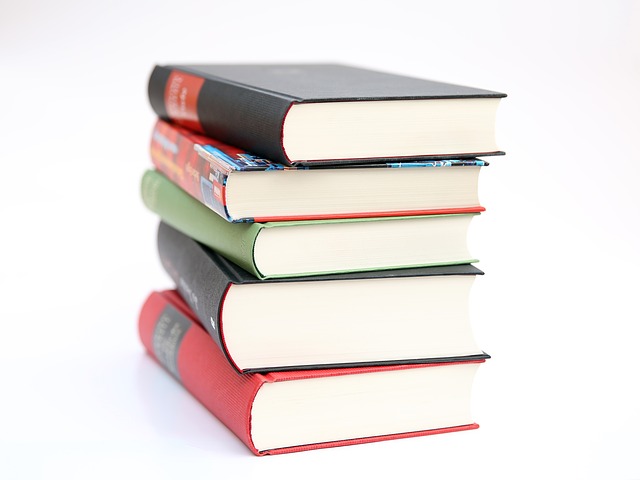
Many books are written by and for siblings of people with disabilities.
The Sibling Survival Guide: Indispensable Information for Brothers and Sisters of Adults with Disabilities. Edited by Don Meyer and Emily Holl
Views from Our Shoes: Growing Up with a Brother or Sister with Special Needs By Don Meyer
The Sibling Slam Book: What it’s Really Like to Have a Brother or Sister with Special Needs By Don Meyer
Thicker Than Water by Don Meyer
Riding the Bus with My Sister by Rachel Simon
Special Siblings: Growing up with Someone with a Disability, Revised Edition by Mary McHugh
How to Be a Sister: A Love Story with a Twist of Autism by Eileen Garvin
Being the Other One: Growing Up with a Brother or Sister Who Has Special Needs by Kate Strohm
Brothers and Sisters by Peggy Gallagher, Thomas Powell, Cheryl Rhodes
-
Quiz your knowledge about the sibling experience:
1. Why are siblings of people with disabilities important?
A. Siblings often have the longest-lasting relationships of their lives with each other.
B. The peer nature of the relationship makes siblings uniquely positioned to support their brothers and sisters with disabilities to lead self-determined lives. This support can include areas such as employment, voting, transportation, relationships and sexuality, healthcare, housing supports, and more.
C. Siblings often become the next generation of caregivers when parents are unable to provide care.
D. All of the above
CORRECT ANSWER:Answers A, B, and C are all correct.
2. There are many levels of advocacy. Which level of advocacy is most important for siblings?
CORRECT ANSWER: Answer D is correct.
3. What is one new aspect you learned about the sibling experience in this online learning module?
There isn't a single "correct" answer to this question. We hoped you learned many new things about the sibling experience.
4. Which resources (book, website, or online community) do you intend to use to gain more information about sibling support?
There isn't a single "correct" answer to this question. This online learning module has provided many resources and we hope that you will find at least one that will help you as you gain more information about sibling support.
5. Siblings' needs evolve as they grow. Identify 1 need that you have experienced from each stage of life you have lived through (childhood, adolescence, adulthood, older age.)
There isn't a single "correct" answer to this question. Each sibling has unique needs. Hopefully this learning module has helped you reflect on your own experiences as a sibling.
-
Survey
